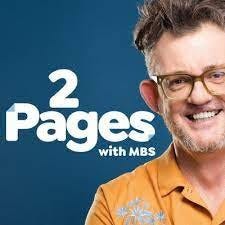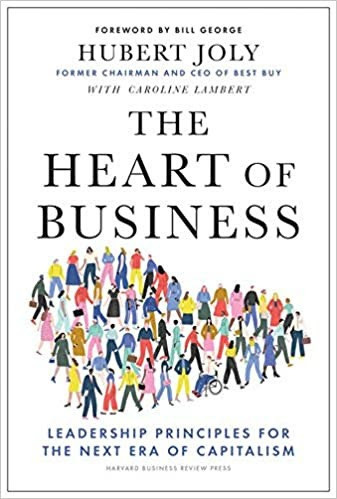Week 21.17 Your Present Life
At the beginning of the year, David Gallimore, Bill Carrier, and Rob Nail came up with a new idea for our group to help members get to know each other better. We called it 100 Coaches Connect and the plan was simple. They put people into groups of 8 and then they would meet for 10 weeks. The first week was the introductory week and then each week a different member told their story and got feedback from the group. Over 100 people signed up and comments have been very good. I am an enthusiastic supporter of the project and have really enjoyed learning about fellow members more deeply. People I already knew, I got to know better. Last week, was my turn. It turns out that there was one more person in the group that I didn't know as well as I thought, me! Part of the reason was I had never put my story together and presented it to a group of friendly familiar people. Here is the process I used, each step was highly impactful for me.
What's My Story?
The first step was to figure out the story I wanted to tell. I thought this would be easy until I realized that usually, we are telling only part of our story, depending on the audience. There are really no moments that I can recall when I was offered the opportunity to tell the story of me, the way I want to tell it. Questions like "who am I?" and "how do I want to be perceived?" jockeyed for position. Do I want to posture or be vulnerable? There was no reason for me to want to impress this group, everyone had joined to learn about each other without judgment. In the end, I decided to try to tell the story that presented the most authentic view that I can tell of myself. One of my favorite sayings is "the jam can't read the label on the jar" so I was well aware that there were limitations on how accurate and complete the story could be, but that is the nature of our condition. I also decided that while I wanted to present a balanced story, I would also leave out some of the times I was less proud of.
What do I need to tell it?
The second step was to decide what I wanted to include. Our meetings are 75 mins with a 15-minute warm-up and then 60 minutes focused on the person. I decided that I wanted to present for no more than 20 minutes so that there was plenty of time for feedback and discussion. So I started to very carefully select the times in my life, the people I cared about, seminal events, and key accomplishments. There were entire areas that I left out completely that I knew mattered deeply to me, but in the interests of time, I just would never be able to do justice to. My first career was as a professional photographer so I had a lot of images to choose from. I put them together in a PowerPoint presentation, sometimes with a single image on a slide, other times with a montage of more. The process became a time to reflect on what I was most proud of, and what I valued the most. I thought of each slide as representing a major life event. When I was done, I realized that even with all of my editing, it would take me 45 mins to present. It was time to edit out instead of in.
What can I let go of?
In the movie, Up In The Air, starring Anna Kendrick and George Clooney, Clooney gives a speech called "What's In Your Backpack?" about letting go of things that are weighing you down. The process of editing my lifestory was just the opposite, I needed to let go of things that were lifting me up. The first company I started... out. The second page (and I really had wanted a third) about life in Paris... gone. My spiritual journey... not this time. If the process of picking the things I wanted to include was difficult, this was even harder. Like all good editing processes, it forced me to focus on what really matters. To me. Right now. The final presentation was a collection of the people and the experiences that I chose to define me as of today. The process of introspection and determine what in my life was most defining of who am was very illuminating and gave me fresh insights into my next choices.
What's Next?
Almost as an afterthought, the last slide was a simple text slide with a few bullets about what I would like to accomplish in the next 3 years. In the context of the rest of the presentation, I have to confess that I didn't give this as much thought. In the context of presenting, this slide became the jumping-off point for an amazingly insightful, supportive, and unexpected conversation by the group of what they had heard my present and what it meant in the context of the last slide. At the end of the session, I had clarity and appreciation for the life I have lived, what I have accomplished, and how I perceive myself. It was unexpected, invigorating, and has given me clarity that will help me more clearly make decisions going forward.
We are planning to do 100 Coaches Connect again with new groups. Initially, I had thought it would be boring presenting my story again. I have come to understand that the process of presenting your life is an active one, that is always in flux. I am looking forward to the quarterly process of reevaluation and observing which priorities change. I thought the task was to present my life, I learned my life is a present. If you have the opportunity, please try this and leave comments about yourexperience.
Week 21 of 52 weeks of giving Room to Read
In honor of our many authors, this month I have chosen to give to and focus on a children's literacy charity. Room to Read seeks to transform the lives of millions of children in low-income communities by focusing on literacy and gender equality in education. Working in collaboration with local communities, partner organizations and governments, we develop literacy skills and a habit of reading among primary school children, and support girls to complete secondary school with the relevant life skills to succeed in school and beyond.
I am excited to start listening to 2 Pages - a new podcast from Michael Bungay Stanier
The new podcast: 2 Pages with MBS is where brilliant people read two pages of a favorite book ... and then dive into the ideas behind the pages. Michael is smart, clever, concise, and really fun to listen to. The first episodes are up, and he'll be posting twice weekly. If that's not enough MBS for you, then you can also check out his episode on Brené Brown's podcast Dare to Lead which has just dropped. Hear him coaching Brené in real-time on an issue she has ... a slightly sweaty moment, you decide if he pulled it off! Link to Apple Podcast
The Heart of Business: Leadership Principles for the Next Era of Capitalism by Hubert Joly Releases May 4th
Hubert Joly, former CEO of Best Buy and orchestrator of the retailer’s spectacular turnaround, unveils his personal playbook for achieving extraordinary outcomes by putting people and purpose at the heart of business. Back in 2012, “Everyone thought we were going to die,” says Joly. Eight years later, Best Buy was transformed as Joly and his team rebuilt the company into one of the nation’s favorite employers, vastly increased customer satisfaction, and dramatically grew Best Buy’s stock price. Joly and his team also succeeded in making Best Buy a leader in sustainability and innovation. In The Heart of Business, Joly shares the philosophy behind the resurgence of Best Buy: pursue a noble purpose, put people at the center of the business, create an environment where every employee can blossom, and treat profit as an outcome, not the goal. Order a signed copy https://www.hubertjoly.org/signedcopy/https://thinkers50.com/event/people-purpose-and-magic/
Digital Body Language: How to Build Trust and Connection, No Matter the Distance by Erica Dhawan Releases May 11th
Humans rely on body language to connect and build trust, but with most of our communication happening from behind a screen, traditional body language signals are no longer visible -- or are they? In Digital Body Language, Erica Dhawan, a go-to thought leader on collaboration and a passionate communication junkie, combines cutting-edge research with engaging storytelling to decode the new signals and cues that have replaced traditional body language across genders, generations, and culture. In real life, we lean in, uncross our arms, smile, nod and make eye contact to show we listen and care. Online, reading carefully is the new listening. Writing clearly is the new empathy. And a phone or video call is worth a thousand emails. Pre-order here
Leading at a Distance: Practical Lessons for Virtual Success by Jim Citrin Releases May 25th
Leading at a Distance is a timely, research-based, and highly practical guide for developing and implementing strategies for conducting high-impact virtual work, building trust, and enhancing team unity. Designed to help leaders shape organizational culture remotely, this must-have resource demonstrates how to conduct virtual onboarding for senior leaders, build top teams from a distance, manage accountability in the new virtual environment, and much more. Leveraging the authors' in-depth research and consulting experience, Leading at a Distance is required reading for anyone needing to adapt to a virtual way of working and develop their virtual leadership skills to maximize organizational effectiveness and performance. Pre-order here
And, as always, thank you, Marshall, for making all of this possible.
With love and gratitude
Scott













